Thinking about print sustainably.
Whilst undertaking a post-grad with the UCD Innovation Academy, I had an idea for a sustainability focussed paper product and many of my contacts were generous enough to respond to two surveys I circulated - the first was aimed at the consumer while the second was specific to those commissioning print.
The idea was to manufacture a seed paper that specifically used native Irish wildflower seed (if you’re interested in gardening or horticulture you’ll likely know why native seed is so important), it’s a product that I would have had cause to use in that past and it simply wasn’t available. However, I didn’t want this to be a cottage industry, as fun as immersing myself in the mess of paper pulp and deckles and seeds might be! It would require professional paper manufacturers and a strong brand and campaign to encourage clients towards a likely more expensive but impactful product.
Along with the surveys I had some really interesting conversations along the way and most pivotal was one with another Elaine - the ever knowledgable Elaine Butler of Living Lightly in Ireland and the Circular Design Institute. Whilst trashing out the sustainability of the product, I learnt that the obstacles that I had envisioned were not the real obstacles. My concern around likely having to manufacture the product outside of Ireland wasn’t so much of an issue, as Europe could be considered ‘local’ and the carbon footprint could be addressed by using a supplier that would transport by rail and sea. The crux of the issue was that the paper would not be recyclable and therefore if it wasn’t used as intended - to be planted - it would not be truly sustainable. Mind blown.
I transferred my newfound knowledge to an entirely different proposition for the purposes of this college project - an industry wide one (more on that again). In the meantime, many of the initial survey responses are worth sharing.
Most interesting for me, is not the traditional Digital V Print discussion but that same discussion in relation to sustainability. Mike Berners-Lee’s How Bad are Bananas, measures the carbon footprint of, well, lots of things and was really useful to me. He discusses how a reader would need to get through about a hundred paperbacks before the paper saving outweighed the carbon emissions of an e-reader. That’s before taking electricity consumption or data use into consideration.
I’m aware that this is a blog post, it is using data and putting pressure on the national electricity grid and if you’re reading it, you’ve likely encountered it through LinkedIn or social media, all doing the same thing. It’s undoubtedly the easier way for me to communicate with you, we all know that and we all know that the people who skipped past this would be much more likely to engage with the content if I bothered to find their postal address and sent them a beautifully designed and printed item. The question now is which is kinder to this planet of ours. We’ve been steered towards digital communication for valid and exciting reasons but within that discussion, print has largely been seen as a more carbon heavy proposition. That’s simply not the case.
So, enough from me - here are some of the survey responses:
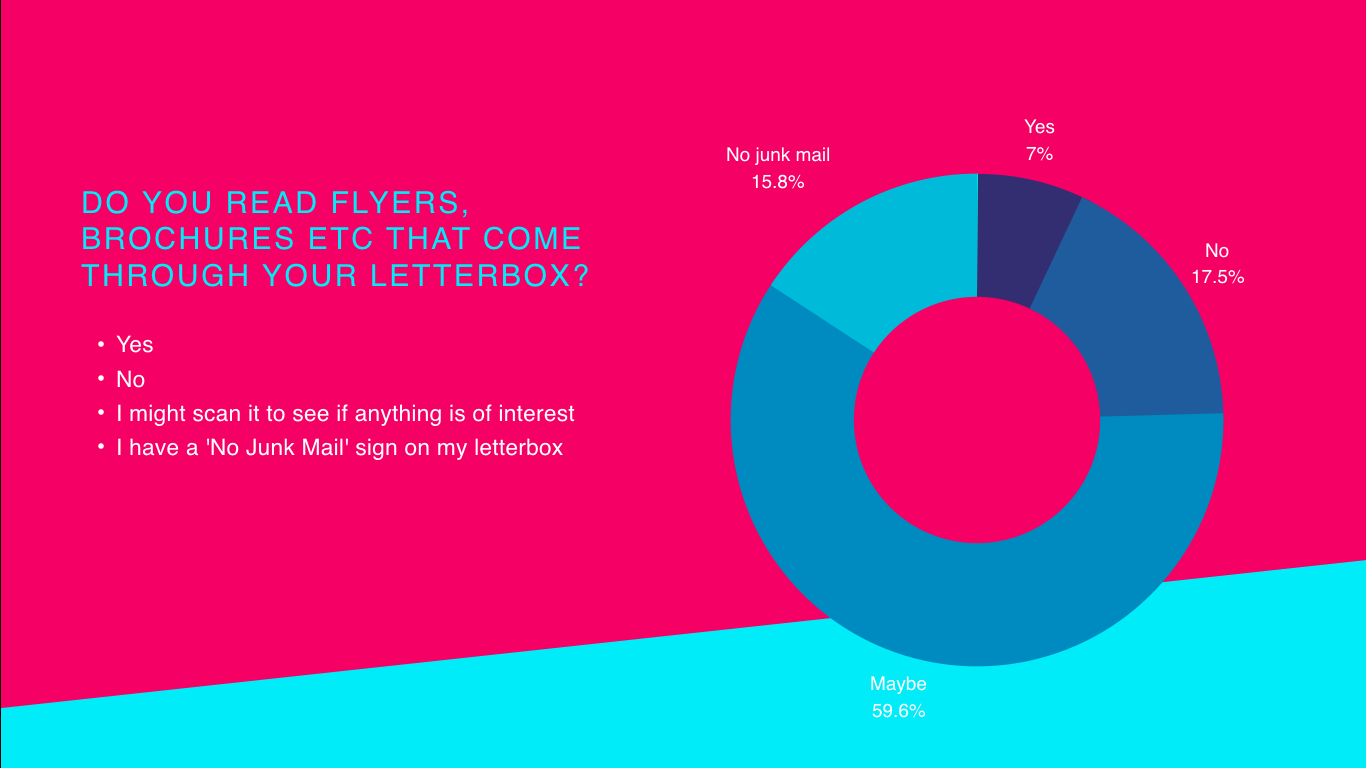
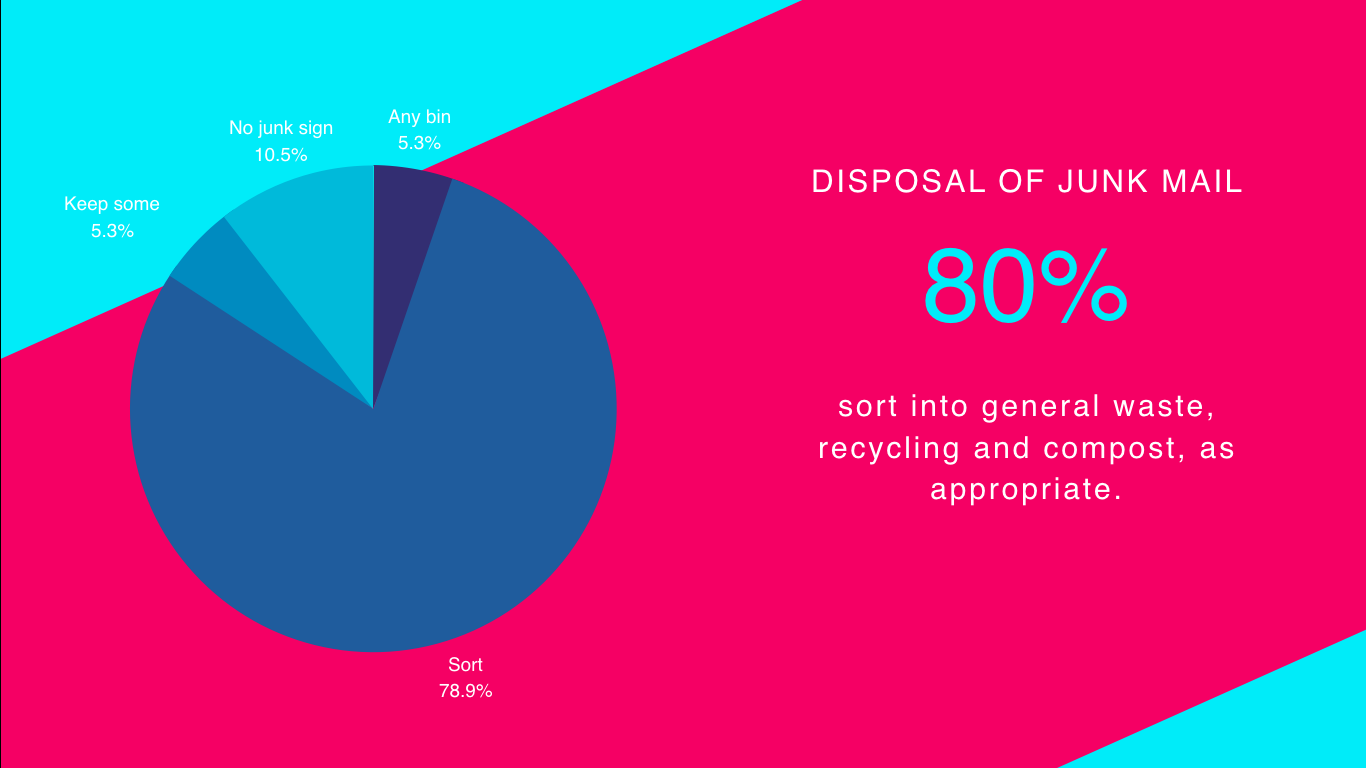
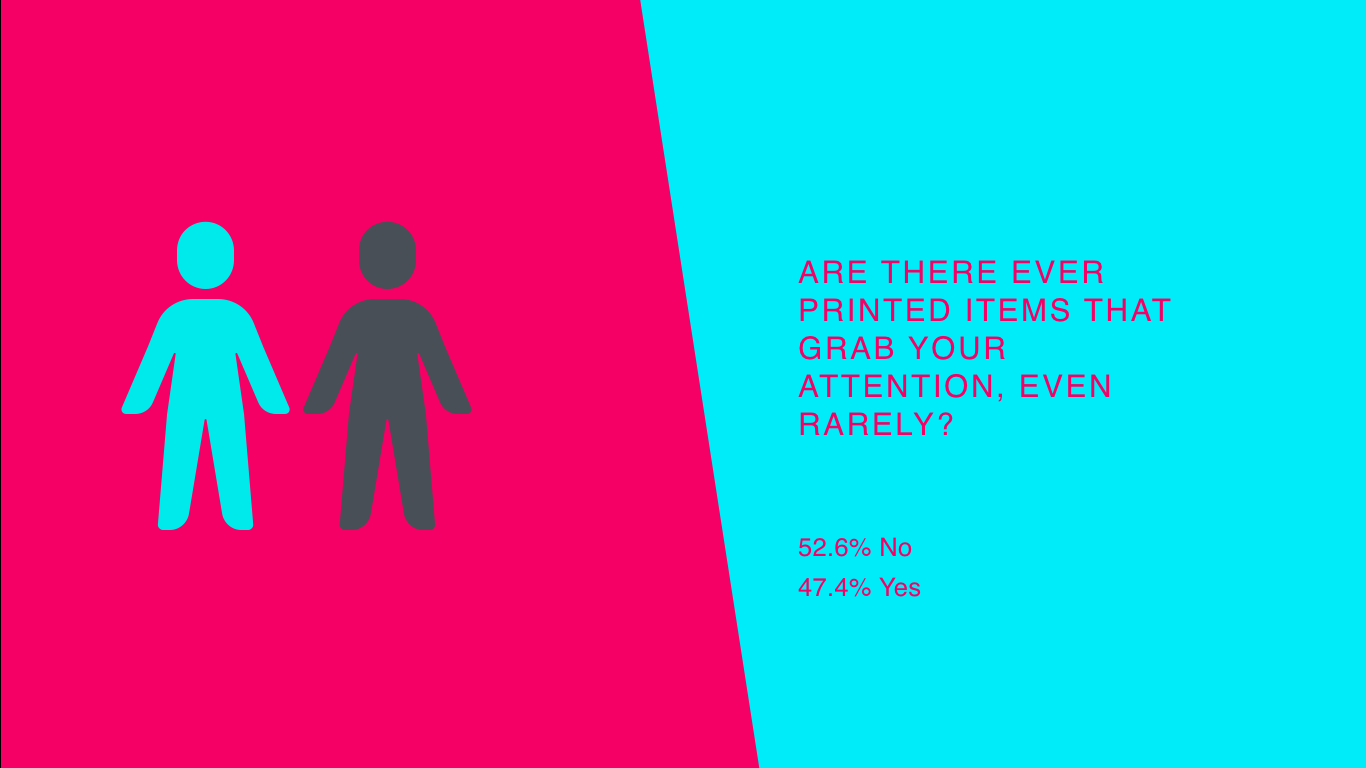
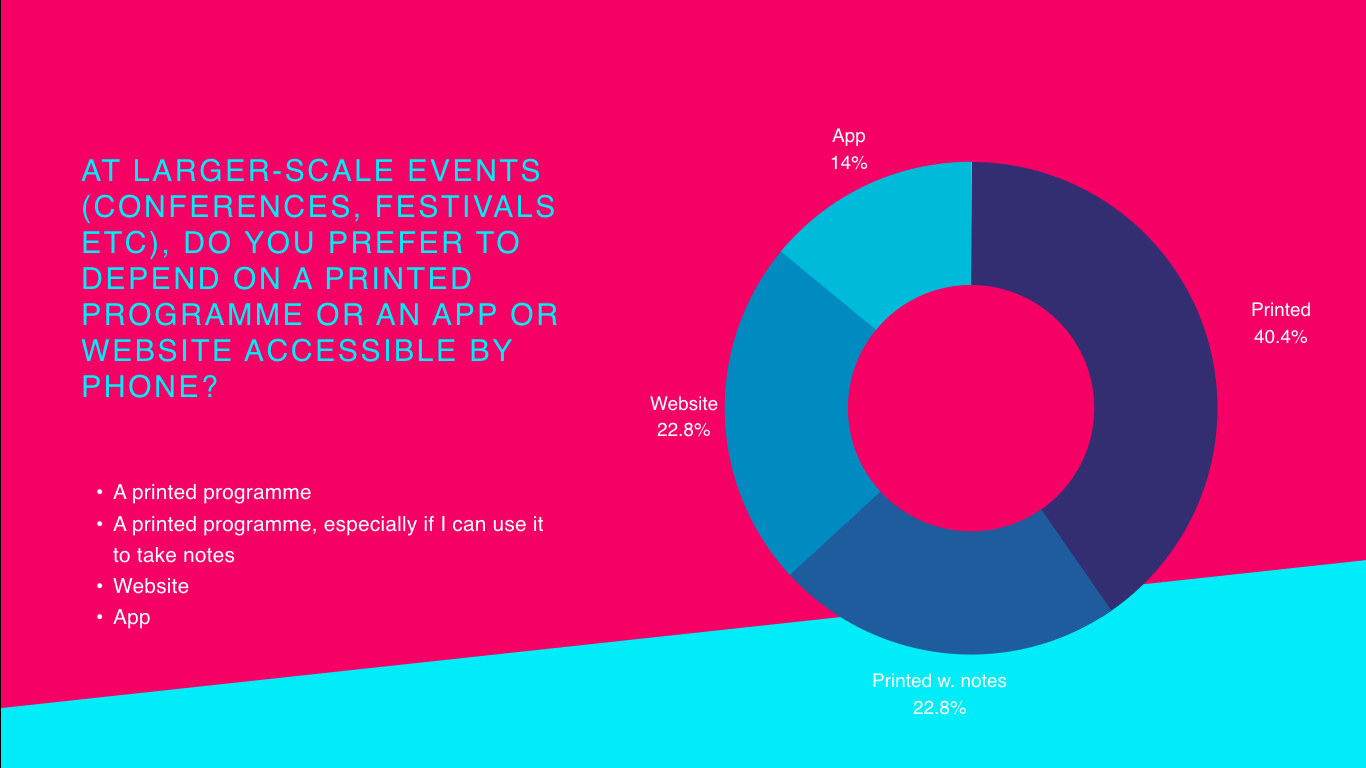
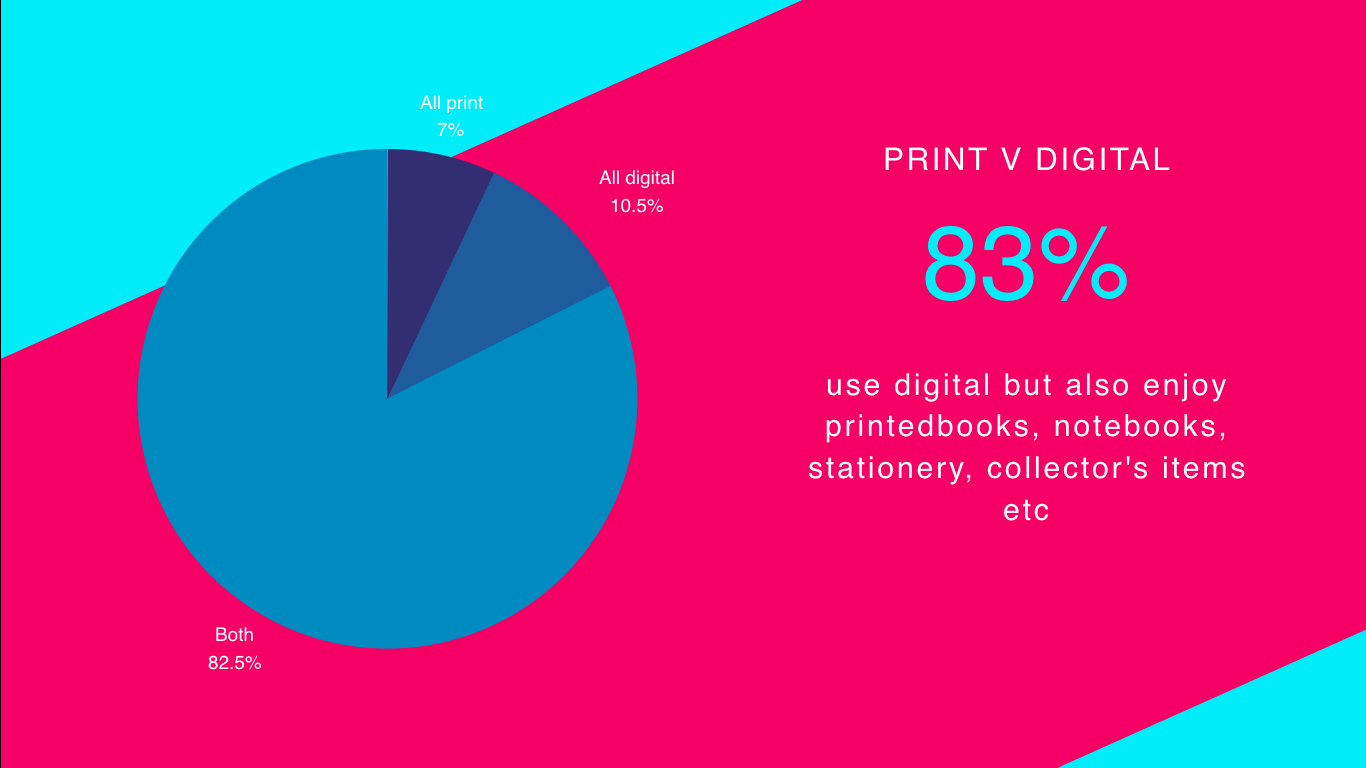
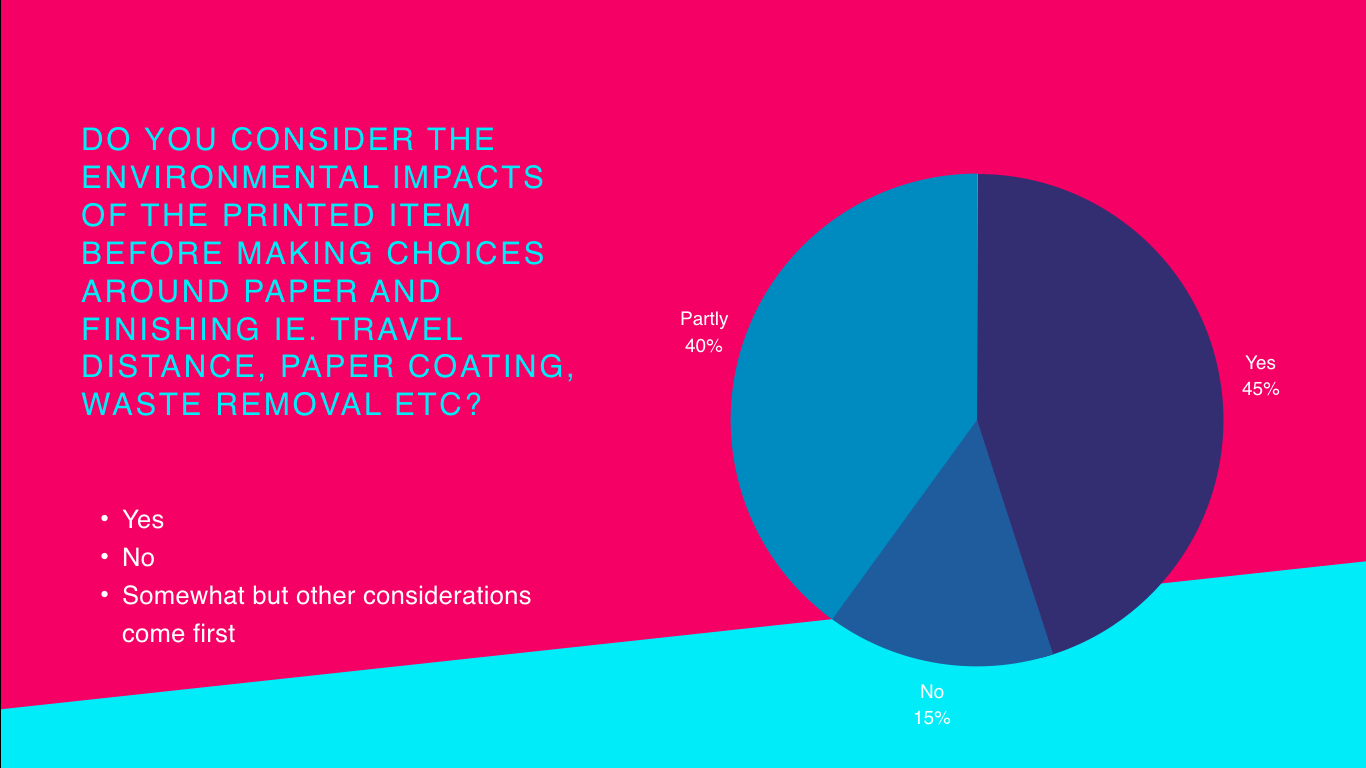
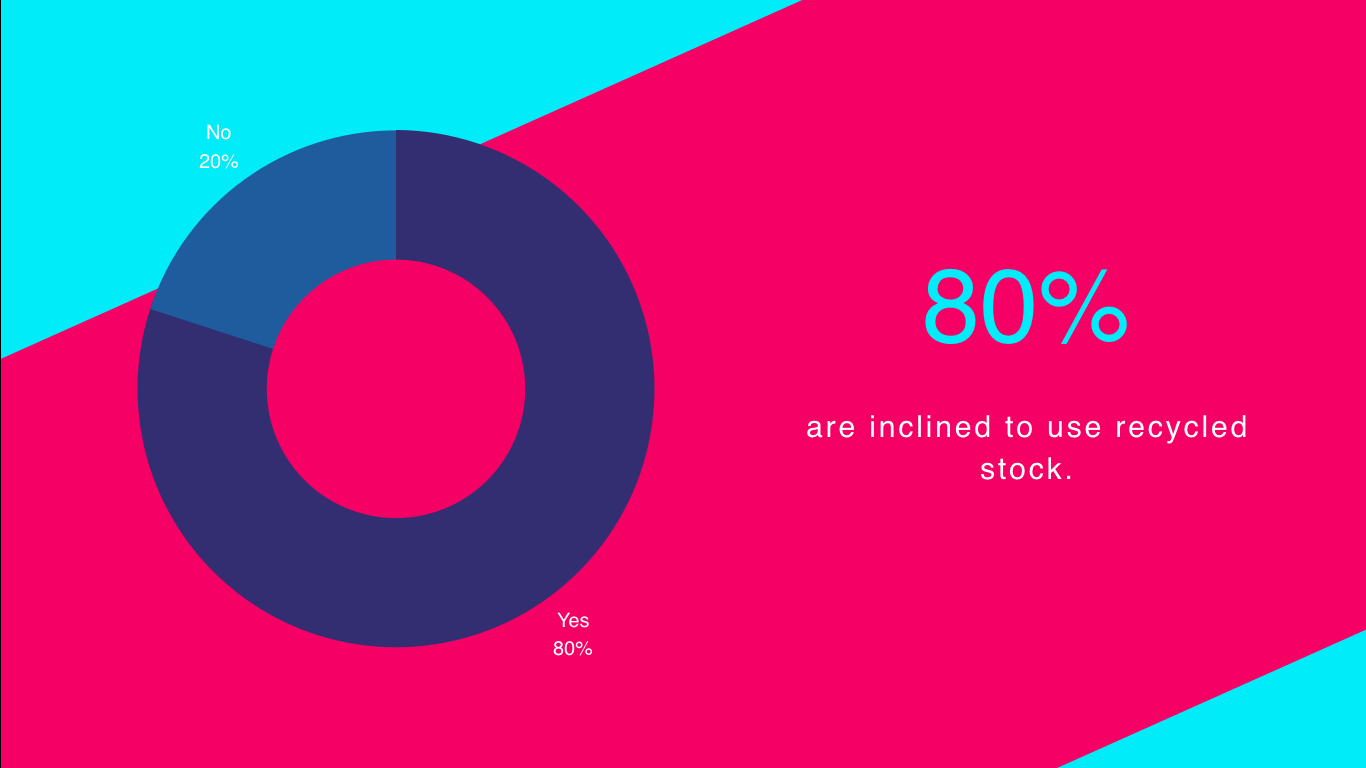
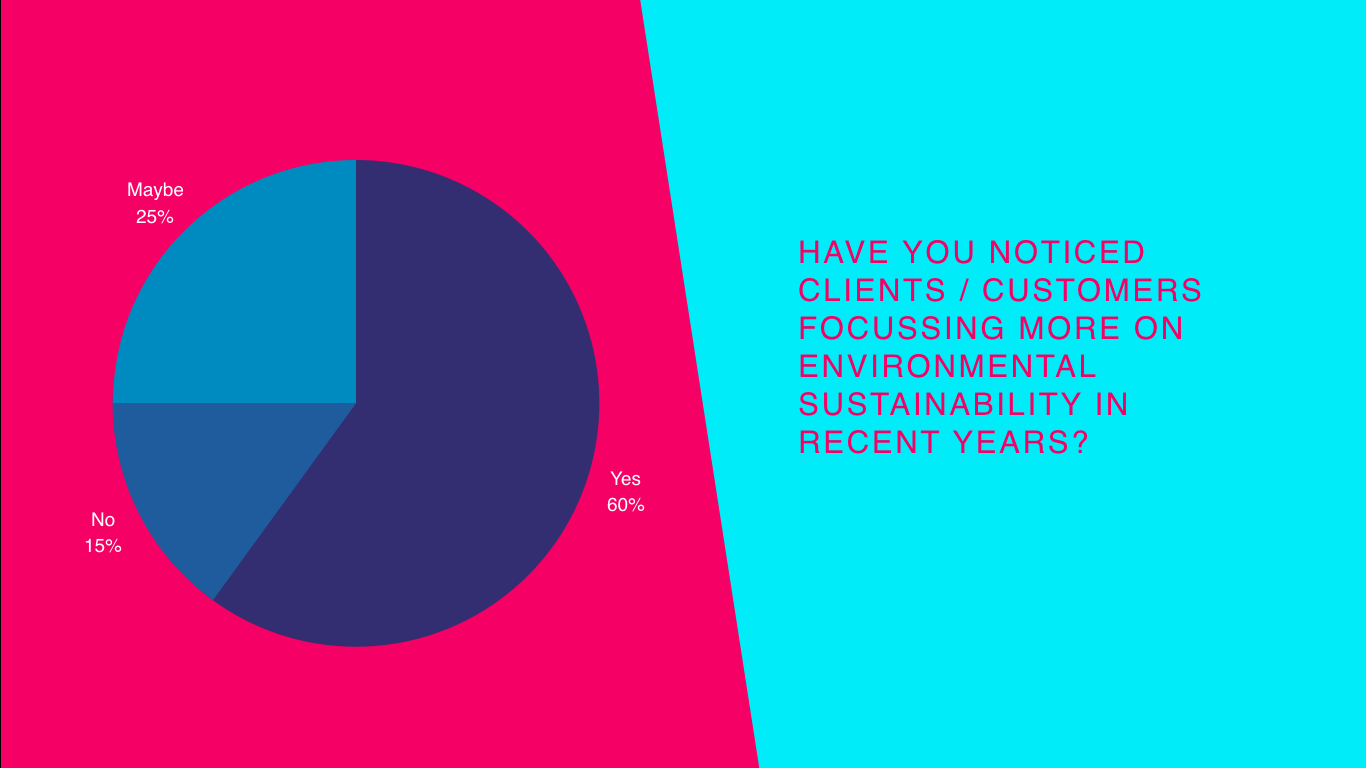
Only 7% of respondents said they read flyers that came in the door although 60% scanned them.
80% disposed of the items by sorting them. Only 5% kept any.
Nonetheless, almost 50% said that there were printed items that grabbed their attention, even rarely ...
When pressed, they largely cited either the quality of the object itself, mentioning colour, design and paper or the offers. People love offers! Some mentioned seed paper too.
Pressing more, I discovered that 37% wanted to navigate a live event digitally but print was the preferred option, with respondents mentioning ease of use, along with note taking and legibility, although the benefit of live updating via digital was mentioned too.
For me, the most pertinent piece of information was that 83% describe themselves as I would - using digital but also enjoying print
About this, people spoke about tangibility, tactility, smell, touch, feel, impact, things not emulated in the digital space.
Meanwhile fewer than 20% of respondents had ever received an item on seed paper and only 23% of those planted it.
Almost all of those working in the design, print and marketing realms considered the environmental impacts of the printed item before making choices around paper and finishing.
80% are inclined to use recycled paper stock
All but 15% had seen some push from their clients towards more sustainable solutions.
There is definitely a willingness but there was also some confusion in the background and a deeper issue unfolding. Those involved in the design, print and marketing industry simply don’t currently have the information they need to make sustainable choices.
If you enjoyed this content, you might like to take a look at this article on sustainability as reflected within the first ten years of the 100 Archive, that I wrote for Map Irish Design.
